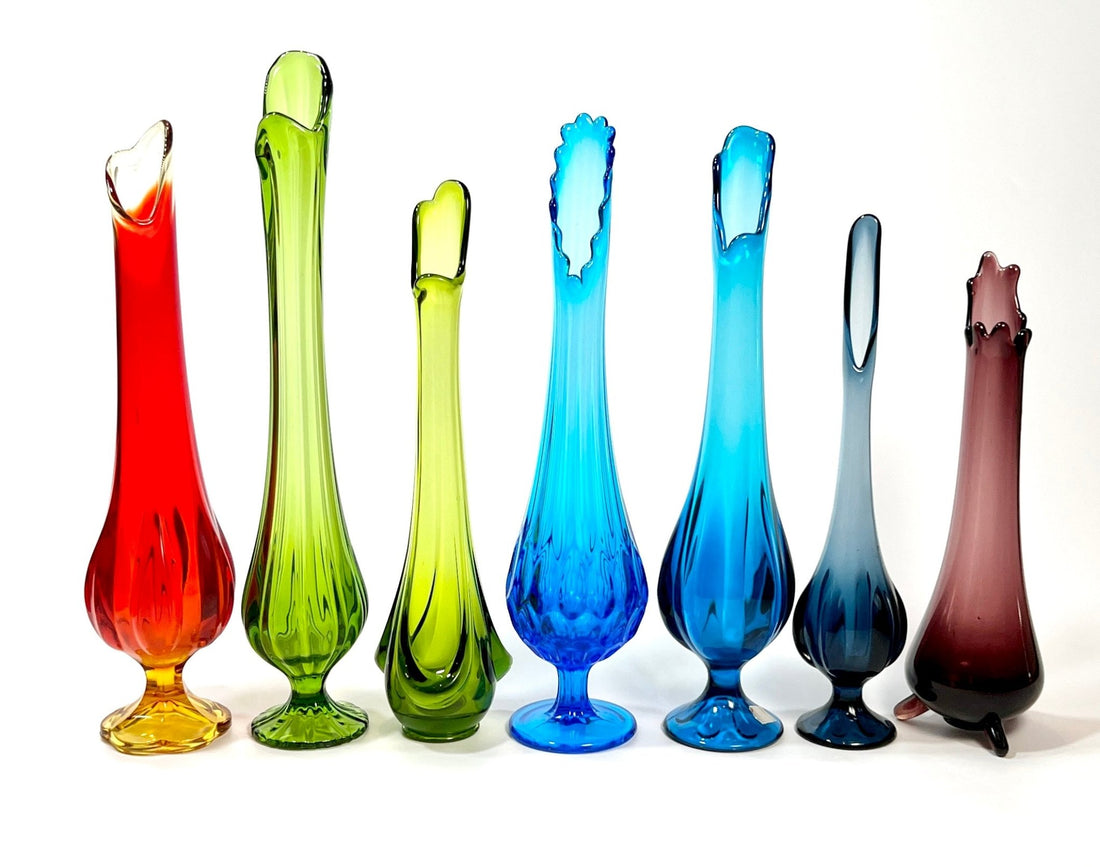The mid-century modern aesthetic is an iconic design movement that emerged in the mid-20th century, from the 1940s to the 1970s. Characterized by clean lines, simplicity, and a focus on functionality, this design style was a direct response to the post-war optimism and a shift towards a more contemporary way of living. Its influence transcends through time, leaving an indelible mark on the design and fashion world, as well as vintage glass art from this era.
The history of mid-century modern design can be traced back to the aftermath of World War II. With a demand for affordable and practical housing solutions, architects and designers began exploring new materials and techniques to create functional yet visually appealing spaces. This led to the rise of renowned designers and companies that significantly influenced the movement.
One of the key figures in mid-century modern design was Charles and Ray Eames, who revolutionized furniture design with their iconic Eames lounge chair and molded plywood pieces. They collaborated with the Herman Miller company, whose innovative furniture designs remain highly sought-after to this day. Scandinavian designers, such as Arne Jacobsen and Hans Wegner, also made a profound impact on the movement with their sleek and functional creations.
The mid-century modern aesthetic not only shaped furniture and architecture but also extended its influence to the world of vintage glass art. Glass companies like Blenko, founded in the late 19th century but flourishing during the mid-century, embraced this design philosophy. Blenko's signature glassware incorporated bold, vibrant colors and clean lines, making them iconic pieces of the era. Another influential American glass company from the mid-century era is Viking Glass. Founded in 1944 in New Martinsville, West Virginia, Viking Glass became known for its exceptional craftsmanship and innovative designs. They produced a wide range of glassware, including decorative art glass, tableware, and unique glass figurines. Viking Glass embraced the mid-century modern aesthetic by incorporating clean lines, organic shapes, and bold colors into their designs, making them a prominent player in the mid-century glass art movement. Their distinct creations remain highly collectible and celebrated among vintage glass enthusiasts to this day.
As the years have passed, the mid-century modern aesthetic has maintained its allure and relevance in contemporary design. Its timeless appeal and enduring influence on various industries continue to captivate designers, collectors, and vintage enthusiasts alike. Embracing the mid-century modern style is a way to celebrate the brilliance of design that resonates with both the past and the present, creating a bridge between nostalgia and innovation that keeps this remarkable movement alive for generations to come.

1 comment
Back in the 80s I had the large orange vase sitting on top my sofa table lowering the hold it was a spree kind of summary night and we were watching a movie and all the sudden the vase exploded. It just literally exploded till this day. No one can give me a direct answer. Apparently some high-pitched frequencies were going on around the area that nobody was aware about, but that’s the only piece of glass that shattered and we on we always wondered why it didn’t do it to the bowling ball size ashtrays that I had and they were big and heavy. Inquiring minds would like to know.